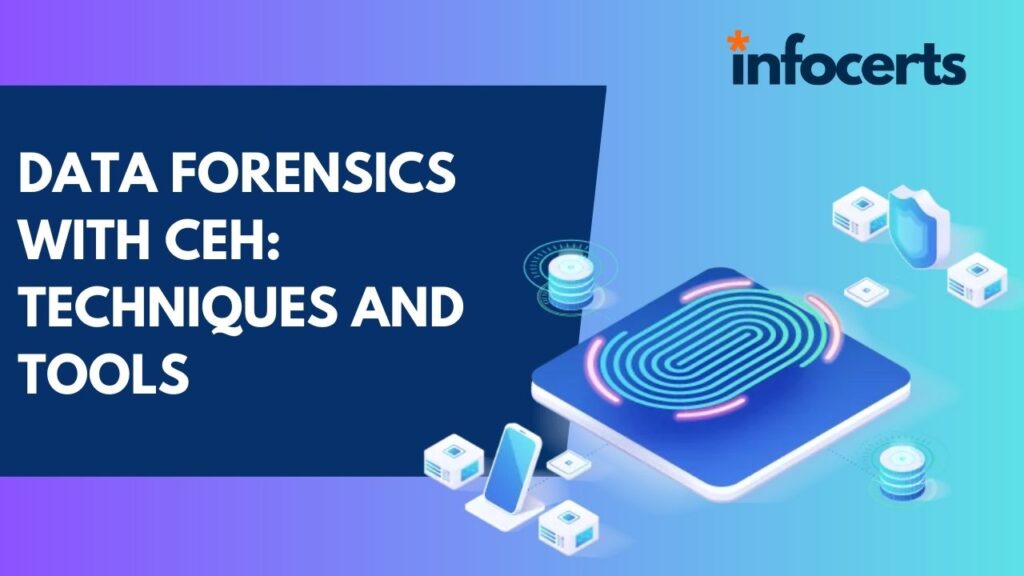Techniques and Tools
In today’s digital age, cybercrime has become a significant concern for individuals and organizations worldwide. One of the critical challenges of cybercrime investigation is collecting, analyzing, and preserving digital evidence, also known as data forensics. Data forensics is the process of collecting, analyzing, and preserving digital evidence in a manner that maintains its integrity and is admissible in a court of law. Certified Ethical Hackers (CEH) are professionals who use their skills to identify vulnerabilities in computer systems and networks. They also play a vital role in Data forensics techniques CEH by using their expertise to collect and analyze digital evidence.
CEHs use various techniques and tools to collect and analyze digital evidence. One of the most common techniques used by CEHs in Data forensics is disk imaging. Disk imaging involves creating a bit-by-bit copy of the entire hard drive or a specific partition. The copy is then analyzed, and any relevant evidence is extracted.
Another Technique used by CEHs is file carving. File carving involves searching for and extracting data from a storage device without relying on the file system. This technique is particularly useful when dealing with damaged or corrupted storage devices.
| Technique/Tool | Description | Example |
| Disk Imaging | Creating a bit-by-bit copy of a hard drive or partition to analyze for evidence | A CEH creates a disk image of a suspect’s hard drive using a tool like FTK Imager or EnCase, then analyzes the image for relevant data such as deleted files, email messages, and browsing history. |
| File Carving | Searching for and extracting data from a storage device without relying on the file system | A CEH uses a tool like Scalpel or Photo Rec to recover files from a damaged or corrupted storage device, extracting relevant data even if the file system is inaccessible or damaged. |
| EnCase | A commercial forensic toolkit that helps CEHs collect and analyze digital evidence | A CEH uses EnCase to collect and analyze digital evidence from a suspect’s computer or mobile device, extracting data such as deleted files, internet history, and chat logs. |
| FTK (Forensic Toolkit) | A commercial forensic toolkit that helps CEHs collect and analyze digital evidence | A CEH uses FTK to create disk images, analyze data, and extract relevant evidence from a suspect’s computer or mobile device. |
| Autopsy | An open-source forensic toolkit that helps CEHs collect and analyze digital evidence | A CEH uses Autopsy to analyze disk images, extract data, and visualize relevant evidence from a suspect’s computer or mobile device. |
CEHs also use various tools to collect and analyze digital evidence. Some of the commonly used tools in data forensics include EnCase, FTK (Forensic Toolkit), and Autopsy. These tools help CEHs to analyze disk images and extract relevant data, including deleted files, email messages, and browsing history.
In conclusion, data forensics is a critical aspect of Cybercrime Investigation, and CEHs play a crucial role in collecting and analyzing digital evidence. CEHs use various techniques and tools, including disk imaging, file carving, and forensic toolkits, to collect and analyze digital evidence. These techniques and tools are essential in maintaining the integrity of digital evidence and ensuring that it is admissible in a court of law.
FAQs
- What is data forensics, and why is it important?
- What is a Certified Ethical Hacker (CEH)?
- What are some techniques used by CEHs in data forensics?
- What are some tools used by CEHs in data forensics?
- What is the role of CEHs in cybercrime investigation?
——————————————————————————————————————–
Infocerts, 5B 306 Riverside Greens, Panvel, Raigad 410206 Maharashtra, India
Contact us – https://www.infocerts.com

